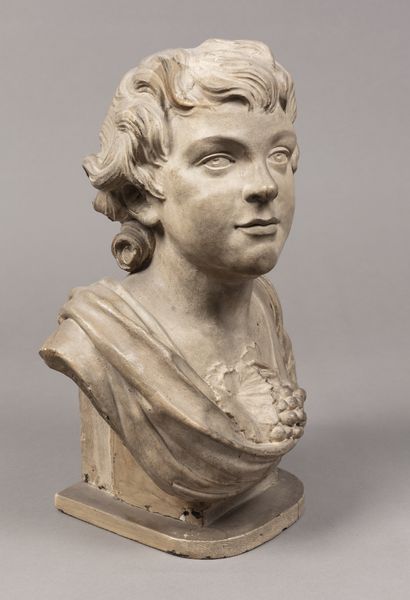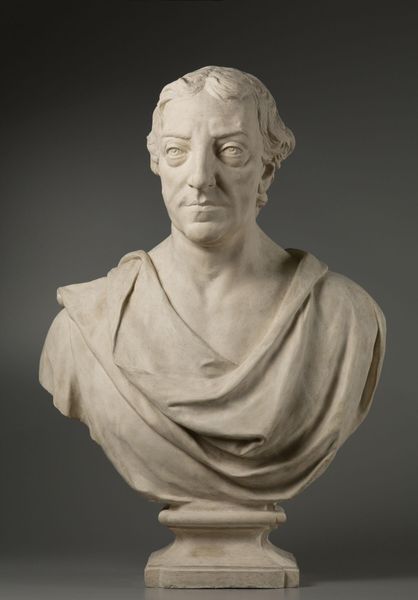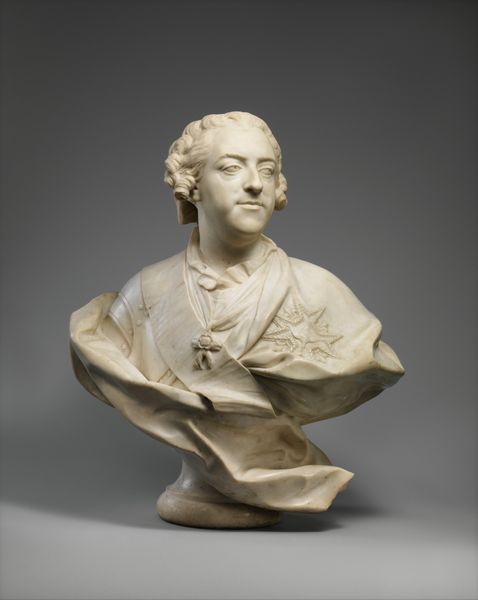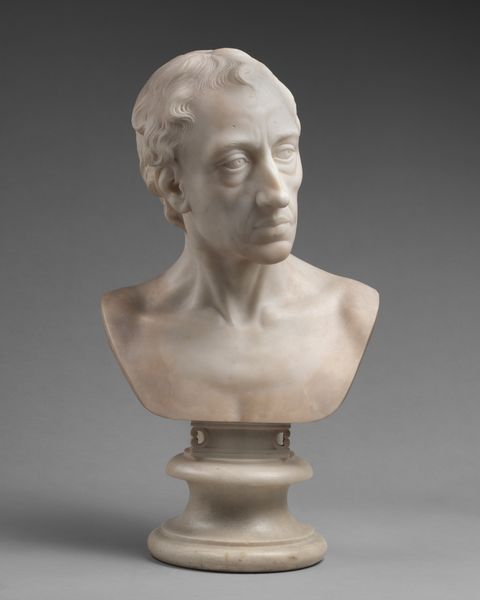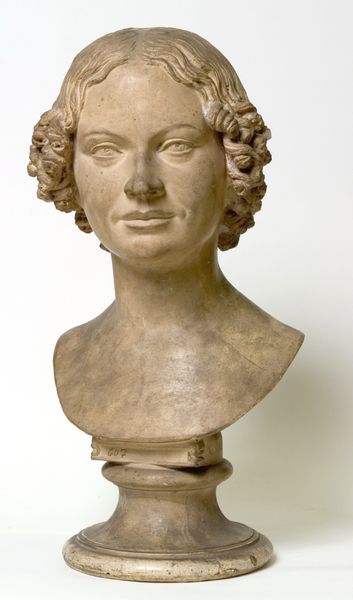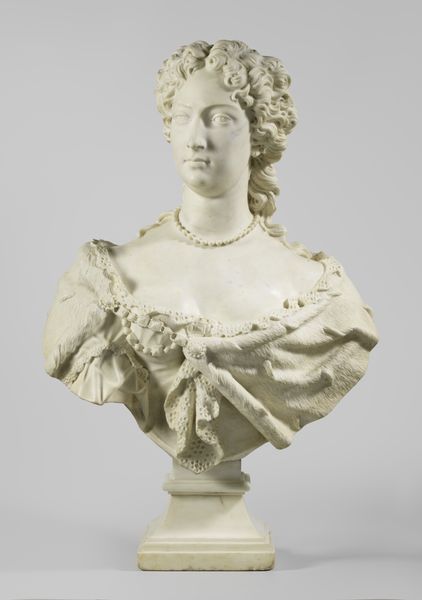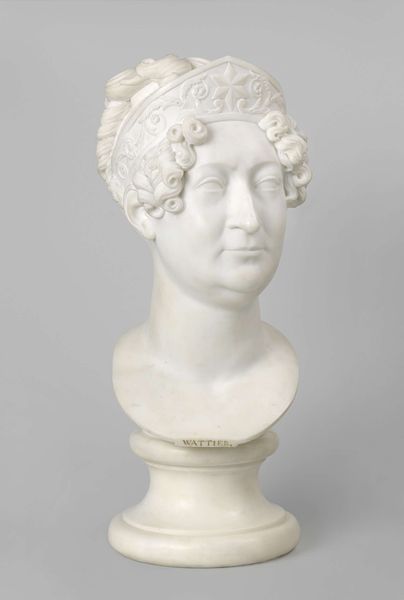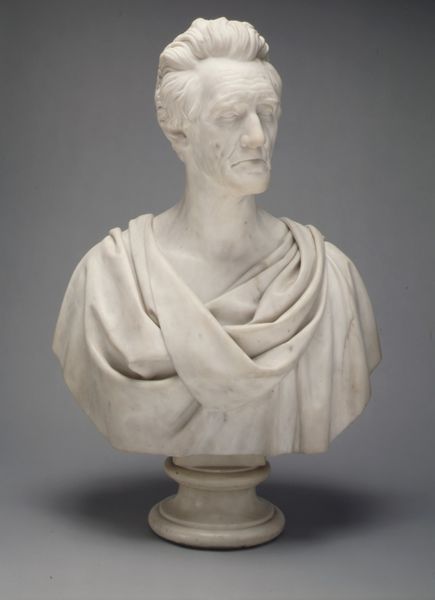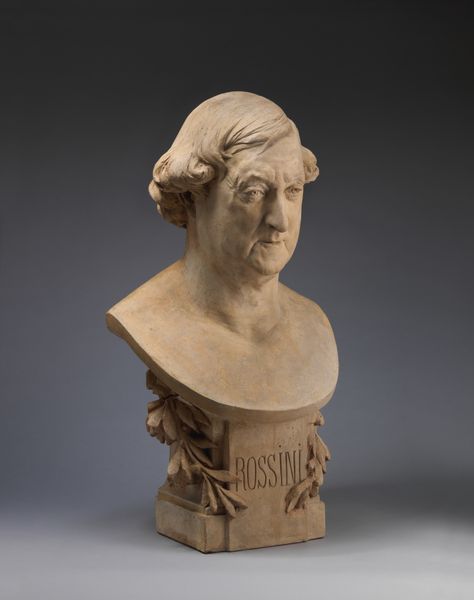
John Churchill, 1st Duke of Marlborough (1650–1722) 1731 - 1739
0:00
0:00
Dimensions: Overall (assembled, wt. confirmed): 36 5/8 in., 245 lb. (93 cm, 111.1 kg); Overall (bust only, wt. confirmed): 24 13/16 in., 155 lb. (63 cm, 70.3 kg); Overall (socle only, wt. confirmed): 90 lb. (40.8 kg)
Copyright: Public Domain
Editor: Here we have John Michael Rysbrack's marble bust of John Churchill, the 1st Duke of Marlborough, crafted sometime between 1731 and 1739. It's hard not to immediately notice the Roman-esque laurel wreath and armor. It makes me think about how heroes were portrayed then, sort of idealized and stoic. What strikes you when you look at this sculpture? Curator: Oh, absolutely, the classical references are key. It’s Rysbrack, after all! But beneath that veneer of Roman glory, I wonder if there's something more intimate trying to peek through? Look closely at the eyes, that slight furrow of the brow, is there a hint of the man behind the legend? Does it give you the impression he might actually disagree with his own hype-man? Editor: I didn’t catch that at first! So, it's like Rysbrack is balancing the Duke’s public image with perhaps a more private, thoughtful side? Is that something totally new for portraiture at the time? Curator: In a way, yes. Plenty of Baroque bluster still around, mind you! The Neoclassical style of the time, in theory, was all about conveying rational restraint, almost moral virtue through simplicity and balanced form, but, as humans are complicated, so is art. The choice to use marble is significant, of course, associating Marlborough with emperors and gods. What do you make of the inscriptions? Editor: It seems to be lauding Marlborough’s military victories, like saving various territories. It reinforces that hero narrative, I guess? Curator: Indeed, it doubles down! But consider how those texts might also shape how viewers, then and now, interpret the...shall we say, the *humanity* captured in the marble. A sculpted marketing campaign, almost. What’s your takeaway now? Editor: It feels like more than just a straightforward depiction of a war hero. Now I see layers, almost a conversation about how we construct and remember historical figures. It's clever! Curator: Precisely! Rysbrack gives us both the Duke and the *idea* of the Duke. The propaganda *is* the portrait.
Comments
No comments
Be the first to comment and join the conversation on the ultimate creative platform.

